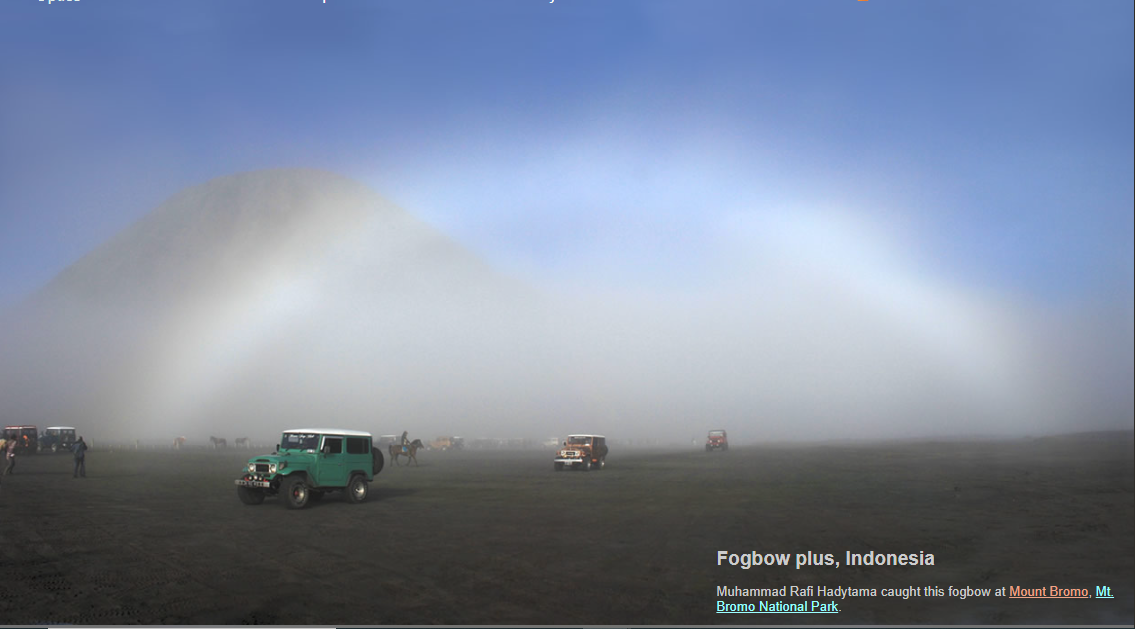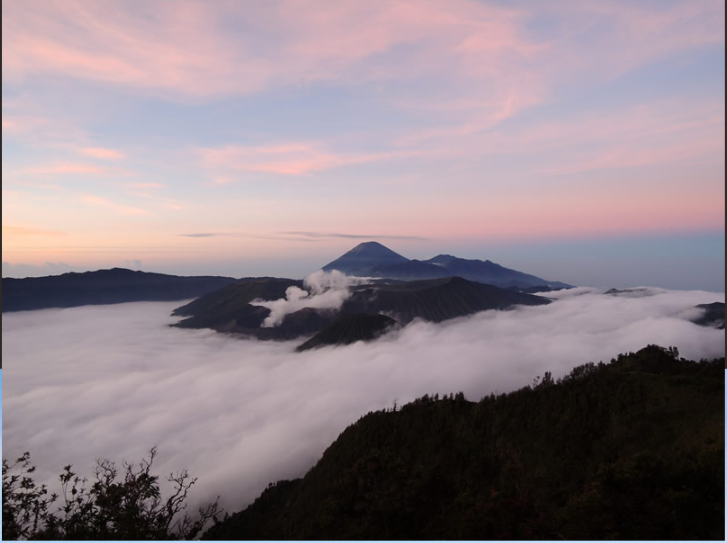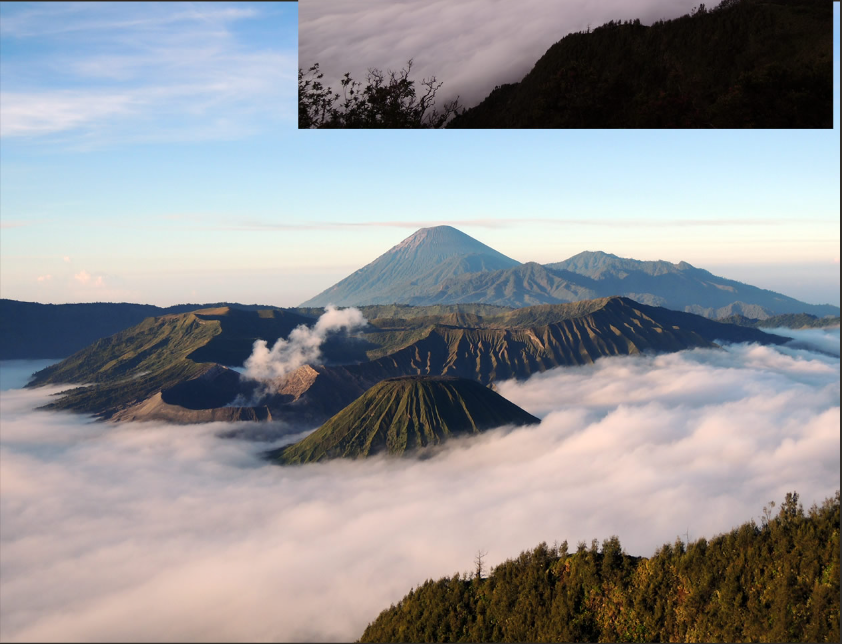OPOD - Fogbow, Indonesia
OPOD - Fogbow, Indonesia: A Rare Atmospheric Phenomenon
Indonesia is known for its stunning landscapes and diverse natural wonders. Among these captivating sights, atmospheric optics enthusiasts are treated to a rare spectacle - the fogbow. Muhammad Rafi Hadytama captured an incredible fogbow at Mount Bromo in Mt. Bromo National Park, adding to a day full of atmospheric phenomena sightings.
On April 28th, 2013, Hadytama experienced a breathtaking display of nature's wonders. From before sunrise until almost midday, he witnessed not just the fogbow but also several other atmospheric phenomena. The day began with a crystal-clear lunar corona, followed by mesmerizing crepuscular rays as the sun rose. Additionally, a magnificent belt of Venus stretched between the solar and antisolar points, captivating Hadytama's gaze.
Descending from the mountain ridge towards Mount Bromo itself, Hadytama found himself in a unique location. Mount Bromo, along with several other mountains, resides within a larger crater formed by an ancient eruption. As he entered the crater shrouded in thick fog, he realized the perfect conditions for a fogbow to manifest. And there it was, a beautiful fogbow gracing the misty surroundings. To add to the enchantment, Hadytama also observed a 22-degree radius halo, completing the atmospheric symphony.
The fogbow phenomenon is a result of scattering and diffraction by individual fog droplets. These droplets typically range in diameter from 1 to 100 microns and possess the ideal size for visible light to exhibit wave properties and diffract upon encountering them. The fogbow itself appears as a large arc of muted colors, lacking the vibrant hues seen in rainbows due to the smaller size of fog droplets compared to raindrops. This smearing effect reduces the number of rings or supernumerary fringes visible within the fogbow.
For optimal optical effects, freshly formed fog with a narrow particle size distribution is crucial. This type of fog allows for a more pronounced and defined fogbow. The glory, a smaller ringed phenomenon at the center of the fogbow, also becomes more prominent under these conditions. The multi-ringed corona encircling the sun further adds to the intricate interplay of light and droplets within the atmosphere.
In addition to the fogbow, Hadytama captured other captivating images of the atmospheric conditions. One striking photograph showcases the dark wedge of the earth's shadow in the west, topped by the pink Belt of Venus. This stunning combination of colors creates a mesmerizing contrast against the backdrop of the sky.
It's important to note that Mount Bromo is an active volcano that has experienced recent eruptions. This geological activity contributes to the unique environment that allows for the formation of these atmospheric phenomena. The interplay between volcanic elements and atmospheric conditions adds an extra layer of complexity to the already fascinating display of light and nature.
In conclusion, witnessing a fogbow in Indonesia's Mt. Bromo National Park is a truly remarkable experience. The combination of volcanic activity, pristine fog conditions, and the presence of fog droplets of ideal size creates an ethereal display of light and color. Muhammad Rafi Hadytama's remarkable photographs capture not only the fogbow but also other atmospheric phenomena, providing a glimpse into the awe-inspiring beauty of our natural world.

Fogbow plus, Indonesia
Muhammad Rafi Hadytama caught this fogbow at Mount Bromo, Mt. Bromo National Park.

The day, April 28th '13 was full of sightings - "I saw 5 atmospheric phenomena in less than 12 hours from before sunrise until almost midday. I was there to watch the sunrise over the Bromo mountains from one of the ridges. From there I saw a lunar corona, one of the clearest I've seen. Then, when the sun had risen there were crepuscular rays. There was also a belt of Venus. It stretched from between the solar and antisolar points, climbed towards the antisolar point, and then descended again on the opposite site.
Not long after sunrise, we went down from the mountain ridge towards the Bromo mountain itself. Mt. Bromo is quite a unique location. The mountain, along with several other mountains, is located inside a larger crater created from an ancient eruption. So, I went down to that crater which was covered by quite a thick fog. I realized if there's a fog, there should be a fogbow present. And it was! After that there was even a 22-degree radius halo.
All images ©Muhammad Rafi Hadytama
IRIS Mie simulation of a glory and fogbow from droplets with a mean diameter of 32 micron but a wide spread of sizes.
The glory and fogbow are thereby smeared out and show fewer rings or supernumerary fringes.
The huge fogbow, the relatively small ringed glory at its centre and the multi-ringed corona around the sun are all parts of the same phenomenon ~ scattering and diffraction by individual fog droplets.
The droplets are 1-100 micron diameter and sufficiently small that visible light exhibits wave properties and is diffracted when it encounters them.
Freshly formed fog with a narrow particle size distribution is best for optical effects.

The dark wedge of the earth's shadow in the west topped by the pink Belt of Venus.

The Mt Bromo complex is active and has erupted recently.

Note: this article has been automatically converted from the old site and may not appear as intended. You can find the original article here.
Reference Atmospheric Optics
If you use any of the definitions, information, or data presented on Atmospheric Optics, please copy the link or reference below to properly credit us as the reference source. Thank you!
-
<a href="https://atoptics.co.uk/blog/opod-fogbow-indonesia/">OPOD - Fogbow, Indonesia</a>
-
"OPOD - Fogbow, Indonesia". Atmospheric Optics. Accessed on November 21, 2024. https://atoptics.co.uk/blog/opod-fogbow-indonesia/.
-
"OPOD - Fogbow, Indonesia". Atmospheric Optics, https://atoptics.co.uk/blog/opod-fogbow-indonesia/. Accessed 21 November, 2024
-
OPOD - Fogbow, Indonesia. Atmospheric Optics. Retrieved from https://atoptics.co.uk/blog/opod-fogbow-indonesia/.